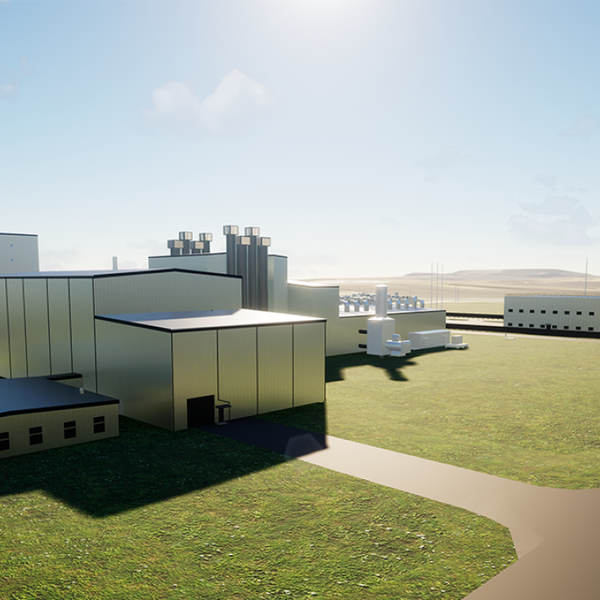Japanese Govt Kept Secret Worst-Case Scenario Post-Fukushima
Information "was so shocking," would frighten the public
After the Japanese government was presented with a worst-case scenario by Japan Atomic Energy Commission Chairman Shunsuke Kondo in the aftermath of the Fukushima disaster, they kept the report secret because "it was so shocking" and would frighten the public, according to a report from Kyodo news.
Kyodo reports:
After the document was shown to a small, select group of senior government officials at the prime minister's office in late March, the administration of then Prime Minister Naoto Kan decided to quietly bury it, the sources said.
"When the document was presented (in March), a discussion ensued about keeping its existence secret," a government source said.
In order to deny its existence, the government treated it as a personal document of Japan Atomic Energy Commission Chairman Shunsuke Kondo, who authored it, until the end of December, the sources said.
It was only then that it was actually recognized as an official government document, they said.
"The content was so shocking that we decided to treat it as if it didn't exist," a senior government official said.
A private-sector panel investigating the disaster at the Fukushima No. 1 nuclear plant intends to examine whether the government tried to manipulate information during its handling of the crisis.
Goshi Hosono, the nuclear crisis minister, said earlier this month that the public wasn't informed of the content of the scenario over fears it "would cause unnecessary anxiety."
Tokyo Electric Power Company (Tepco) recently recently video from an endoscope pushed into one of the reactors at Fukushima:
An Urgent Message From Our Co-Founder
Dear Common Dreams reader, The U.S. is on a fast track to authoritarianism like nothing I've ever seen. Meanwhile, corporate news outlets are utterly capitulating to Trump, twisting their coverage to avoid drawing his ire while lining up to stuff cash in his pockets. That's why I believe that Common Dreams is doing the best and most consequential reporting that we've ever done. Our small but mighty team is a progressive reporting powerhouse, covering the news every day that the corporate media never will. Our mission has always been simple: To inform. To inspire. And to ignite change for the common good. Now here's the key piece that I want all our readers to understand: None of this would be possible without your financial support. That's not just some fundraising cliche. It's the absolute and literal truth. We don't accept corporate advertising and never will. We don't have a paywall because we don't think people should be blocked from critical news based on their ability to pay. Everything we do is funded by the donations of readers like you. Will you donate now to help power the nonprofit, independent reporting of Common Dreams? Thank you for being a vital member of our community. Together, we can keep independent journalism alive when it’s needed most. - Craig Brown, Co-founder |
After the Japanese government was presented with a worst-case scenario by Japan Atomic Energy Commission Chairman Shunsuke Kondo in the aftermath of the Fukushima disaster, they kept the report secret because "it was so shocking" and would frighten the public, according to a report from Kyodo news.
Kyodo reports:
After the document was shown to a small, select group of senior government officials at the prime minister's office in late March, the administration of then Prime Minister Naoto Kan decided to quietly bury it, the sources said.
"When the document was presented (in March), a discussion ensued about keeping its existence secret," a government source said.
In order to deny its existence, the government treated it as a personal document of Japan Atomic Energy Commission Chairman Shunsuke Kondo, who authored it, until the end of December, the sources said.
It was only then that it was actually recognized as an official government document, they said.
"The content was so shocking that we decided to treat it as if it didn't exist," a senior government official said.
A private-sector panel investigating the disaster at the Fukushima No. 1 nuclear plant intends to examine whether the government tried to manipulate information during its handling of the crisis.
Goshi Hosono, the nuclear crisis minister, said earlier this month that the public wasn't informed of the content of the scenario over fears it "would cause unnecessary anxiety."
Tokyo Electric Power Company (Tepco) recently recently video from an endoscope pushed into one of the reactors at Fukushima:
After the Japanese government was presented with a worst-case scenario by Japan Atomic Energy Commission Chairman Shunsuke Kondo in the aftermath of the Fukushima disaster, they kept the report secret because "it was so shocking" and would frighten the public, according to a report from Kyodo news.
Kyodo reports:
After the document was shown to a small, select group of senior government officials at the prime minister's office in late March, the administration of then Prime Minister Naoto Kan decided to quietly bury it, the sources said.
"When the document was presented (in March), a discussion ensued about keeping its existence secret," a government source said.
In order to deny its existence, the government treated it as a personal document of Japan Atomic Energy Commission Chairman Shunsuke Kondo, who authored it, until the end of December, the sources said.
It was only then that it was actually recognized as an official government document, they said.
"The content was so shocking that we decided to treat it as if it didn't exist," a senior government official said.
A private-sector panel investigating the disaster at the Fukushima No. 1 nuclear plant intends to examine whether the government tried to manipulate information during its handling of the crisis.
Goshi Hosono, the nuclear crisis minister, said earlier this month that the public wasn't informed of the content of the scenario over fears it "would cause unnecessary anxiety."
Tokyo Electric Power Company (Tepco) recently recently video from an endoscope pushed into one of the reactors at Fukushima:

